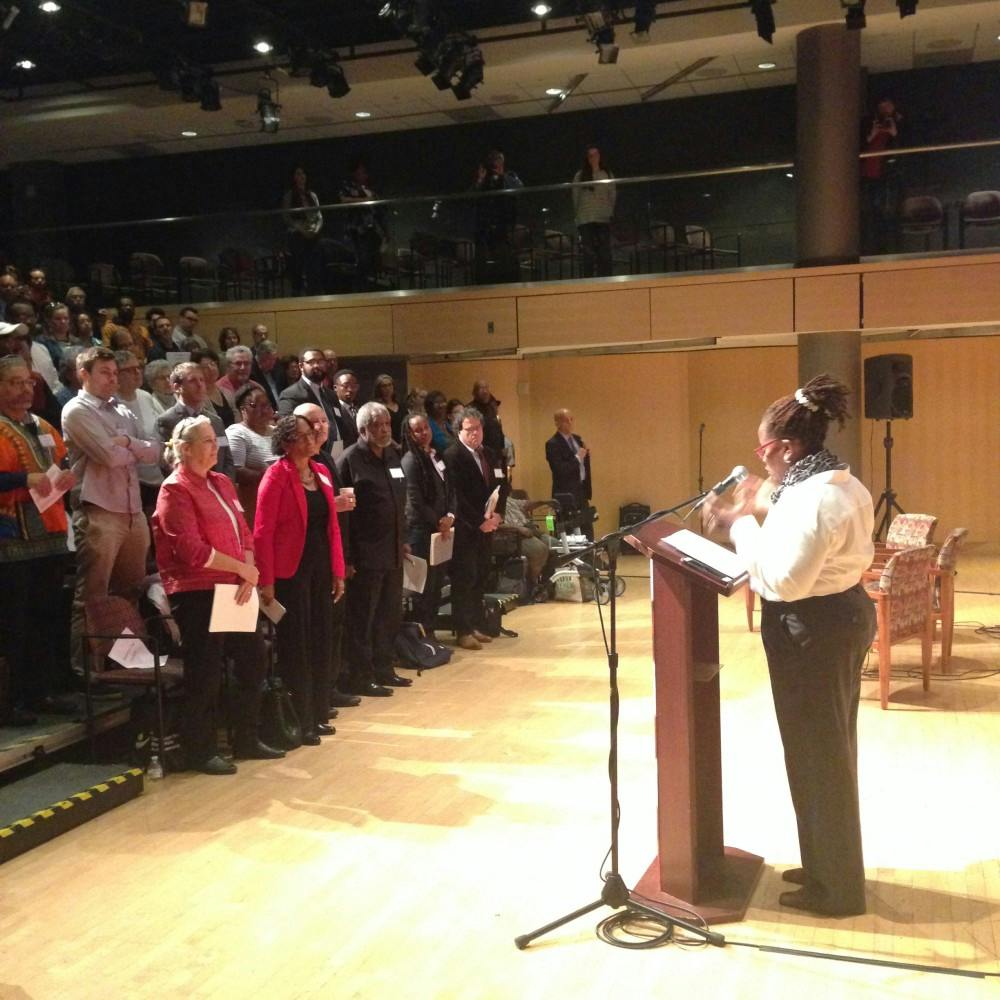The Reginald F. Lewis Museum of Maryland African-American History and Culture hosted a half-day conference called “Lynching in Maryland: The Journey from Truth to Reconciliation” on Saturday, which explored the history and legacy of lynching in the state.
The conference featured speeches and panels by scholars, archivists, journalists and activists. They discussed the contemporary media coverage of lynchings, their own work on identifying lynching victims and the legacy of lynching in Maryland today.
Will Schwarz, founder of the Maryland Lynching Memorial Project (MLMP), moderated the event. He emphasized the importance of such gatherings as spaces of education and healing.
“Racism will never loosen its grip on our national soul until we confront it,” he said.
The event began with opening remarks from Schwarz as well as author, radio talk show host and Loyola University Maryland Associate Professor Karsonya Wise Whitehead. Several speakers also recited the names of the 40 currently-known victims of lynching in Maryland.
The most recent victim, George Armwood, was killed in 1933. Two of his descendants, Kirkland Hall and Tina Johnson, were among the speakers reciting the victims’ names.
Armwood is the subject of a short film created by the MLMP, which was screened following the recitation and a moment of silence. The film, BURN: The Lynching of George Armwood, combined contemporary images and newspaper clippings with animation and modern-day interviews to tell the story of Armwood’s execution.
Armwood, an African-American farm worker with mental disabilities, was accused without evidence of attacking an elderly white woman. He was then beaten, hanged and burned by a civilian mob. Nicholas Creary of Bowie State University spoke after the film about his research on Maryland lynchings, saying that many were similarly motivated by alleged assaults on white women.
Ryan Cox, a research archivist from the Maryland State Archives’ Legacy of Slavery in Maryland Project then gave brief remarks about his work with the limited archival material surrounding lynchings. Cox emphasized the importance of making such records accessible and searchable by the public.
“We learn more about our records every day,” he said.
In an interview with The News-Letter, Iyelli Ichile, an associate professor at Montgomery College who is currently researching the legacy of lynching, expressed her appreciation for the event.
“I’m looking forward to the ways in which people are going to use this space. I hope they will use this space to [make] this conversation current,” she said. “Lynching is usually talked about as a historical phenomenon, a past event that occurred, and I really want us to talk about it differently. I want us to understand that lynching is an ongoing practice; it is an American tradition; it has old roots in slavery, but it continues even to today.”
Ichile elaborated that while lynching may not exist in the U.S. in the way being discussed by the conference today, it remains relevant as a contemporary issue as well as a historical event.
“We’re talking about lynching through the court system; we’re talking about judicial racial terror, but we are also talking about the lynching that happens on the part of police. Police have become essentially the modern lynch mob,” she said. “We maybe need to expand our definition of lynching or expand our purview of racial violence today, to make sure we... find solutions that are informed by the past but work in the [present] moment.”
Salisbury Mayor Jake Day is also concerned with taking steps to honor the legacy of lynching victims. In a speech, Day outlined his ongoing mission to remove a monument of Confederate General John Henry Winder from the Wicomico County courthouse lawn.
“John Winder was the head of the Confederate prison system. He oversaw Andersonville, he oversaw tortures, he oversaw the death of tens of thousands of U.S. soldiers,” Day said in an interview with The News-Letter. “As a U.S. soldier myself, as an army officer, I’m pretty disgusted in my city that there’s a sign for this guy.”
When Day signed a local activist’s petition to have the monument removed, however, he said he was met with resistance from other elected officials. He was surprised by this because multiple other events of historical significance took place on the same courthouse lawn — including a speech by Frederick Douglass and the lynching of Matthew Williams in 1931.
“The sign to a Confederate war criminal is on the spot where Frederick Douglass once stood and gave remarks to our community and where the second-to-last lynching in Maryland took place,” Day said. “So to me, there are a lot of things that are worth marking about that spot, and that’s not one of them.”
Nevertheless, Day expressed appreciation for the conference and other events meant to spark public discussion about racial issues.
“Honestly in my lifetime there hasn’t been much discussion about lynchings in Salisbury,” he said. “But the only way to address that [issue] is to honestly discuss the past.”
Ichile echoed Day’s sentiments. She emphasized the importance of groups and individuals who aim to memorialize the victims of lynching, in addition to teaching about the history of the practice.
“It’s obvious that everyone who is involved and everyone who has even encountered this story on any level is really passionate about it,” said Ichile. “I really feel like in this moment these ancestors, these victims, are speaking to us.”





